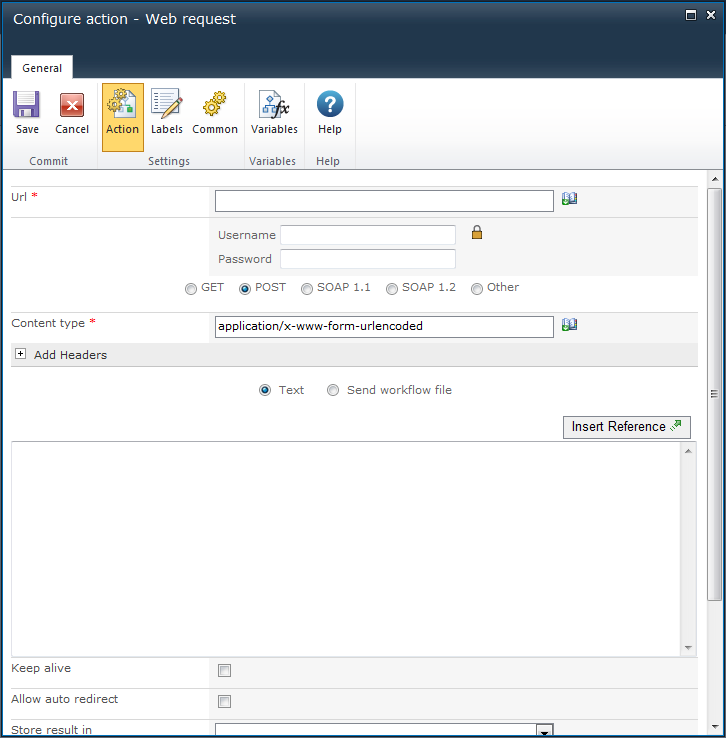








|
 |

|
 |

|
 |

|

|
This workflow action performs an HTTP request to a URL. It can be used to perform a variety of HTTP operations.
To use the workflow action:
Alternatively
To change the settings used by the action:
For more information on the other options in the drop-down, please refer to the Getting started with the Nintex Workflow designer.
For more information about web requests, please refer to this MSDN reference.

The URL to which the HTTP request will be made.
The credentials that will be used for authentication to the URL. If no credentials are provided, the request will be made anonymously.
The Web Request action is capable of making many common HTTP calls. GET, POST, SOAP 1.1 and SOAP 1.2 are predefined and Other can be selected to specify another operation. Input fields for headers will be displayed if they are required for the operation.
Specify the headers to be sent with the web request. Multiple headers can be selected by choosing the Add header option.
Specifies the textual data that is sent as the body of the web request. This option is available for all operations except GET. To include a base64 encoded copy of the file that the workflow is running on in the request text, type in [FileData] and it will be replaced at run time (libraries only).
Specifies that the bytes of the file on which the workflow is running should be sent as the web request body. This option is only available for workflows that are created on a document library.
Allows for the Keep alive option to be specified for the request.
Allows for the Auto redirect option to be specified for the request.
The workflow variable of text type in which to store the contents of the response.
The workflow variable text or number type in which to store the numeric http response code.
The workflow variable of collection type in which to store each response header. Each header will be represented by a single item in the collection, and will be formatted as header name=header value.
The workflow variable of collection type in which to store each response cookie. Each cookie will be represented by a single item in the collection, and will be formatted as cookie name=cookie value.